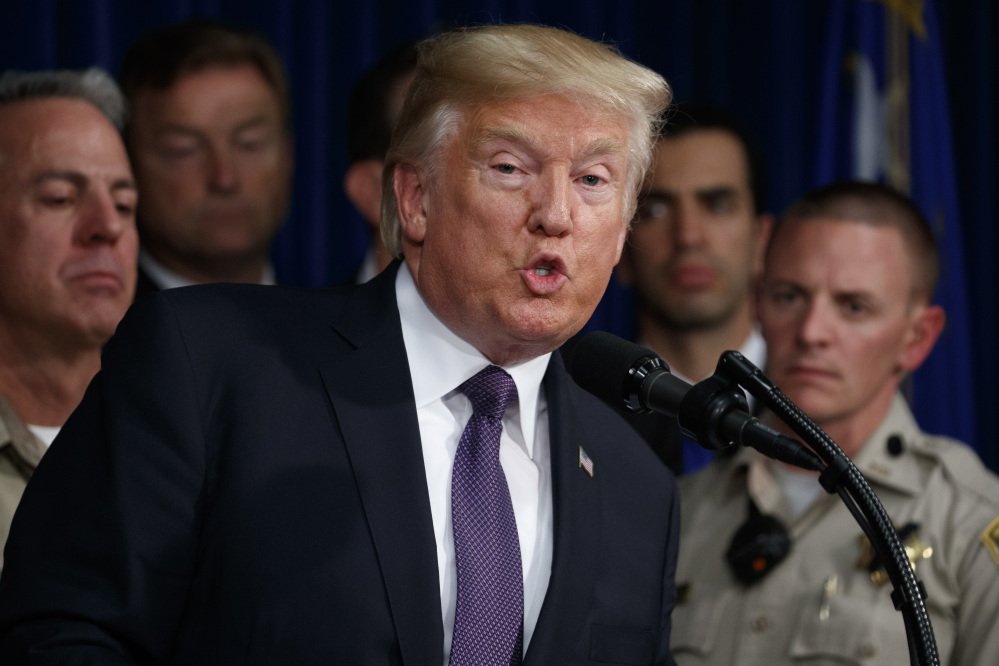The rift between America and Iran is currently as unbridgeable as the Persian Gulf. Iran and the United States are in a full-fledged battle to exert more influence over the Middle East, control the flow and price of energy, and to effect Israel’s status and survival. With President Donald Trump’s withdrawal from the Iran nuclear deal, the next phase of this battle has just begun.
Relations between the two nations are complex and will be forever colored by the 1979 Iranian Revolution that filled American TV screens with images of a helpless nation held hostage. Violent images are seared into the American mind of blindfolded U.S. embassy personnel in Iran and American flag-burning student protesters shouting, “Death to America.” President Jimmy Carter’s failed attempt at a hostage rescue resulted in a crashed helicopter and more death. Fear, anger and hate grew between Tehran and Washington. Iran’s current Islamic theocratic government was born of this revolution and is the direct inheritor of this violent legacy.
Iran’s historic grievances with the U.S. range from a 1953 CIA-led coup overthrowing its legitimate government to install the Shah of Iran, supporting his domestic terrorizing SAVAK secret service, and exploiting Iran’s substantial oil resources. Crippling and effective economic sanctions enforced during the Obama administration added stress to the relationship and provided pressure for Iran to come to the nuclear negotiating table, where Iran did its best to run out the diplomatic clock, using the countdown to the 2016 U.S. presidential race as temporal leverage.
Enter the new chapter of this ongoing saga and long simmering battle between the U.S. and the Islamic Republic. President Trump has made good on his promise to shred the Iran nuclear deal, returning relations to a heightened state of tension after a brief Obama lull. Nuke deal opponents rightly stated that the deal did nothing to curb Iran’s regional ambitions or conventional capacities, gave it renewed access to global financial and energy markets, and allowed for the further development of missile delivery technology.
But that was never the point.
The unstated goal of the JCPOA deal was to keep nukes out of the hands of Iran’s religious autocrats long enough to buy time, supply cash and provide organizational support for Iranian youth and reformers to slowly change their government and its foreign policies. The nuclear deal was President Barack Obama’s big bet on reform in Iran.
Donald Trump and his most vocal regional allies in Israel and Saudi Arabia do not believe in Iranian reform or accommodation. Never did. For them, the only acceptable and desirable outcome is Iranian regime change.
Obama was for reform. Trump is for regime change. The contrast in style, approach, policy, and practice could not be more pronounced. The one constant is Iran.
Even under the deal, Iran was busy destabilizing Yemen and feeding a tragic and disastrous Houthi-led civil war that also fired missiles into Saudi Arabia. Iran’s military arm, the Islamic Revolutionary Guard Corps (IRGC), remains active in neighboring Shiite-dominated Iraq, Russian-bolstered Syria, and tightly allied with the just strengthened Hezbollah leadership in Lebanon.
Donald Trump and his newly reconstituted foreign policy and national security team are not only highly suspect of organic reform in Iran, they have become hell-bent on regime change in Tehran. Ripping-up the JCPOA deal makes this policy choice clear.
Naturally, Trump’s reneging on the deal has multiple consequences and opportunities, many of which are hard to know at this stage. But some will be immediate. For one, oil prices are likely to go up with certain growing instability and uncertainty in the Gulf. That should help Saudi Arabia and Russia financially as they get more money per barrel of crude on the international spot markets. Rising energy prices may even goose U.S. shale oil production. For the average American, however, it will cost more to fill up a tank of gas.
Other consequences? The Iranian government will probably crack down further on domestic dissent, political reform, and governing moderates while strengthening the IRGC at home.
Tehran may at first be cautious outside its borders because any direct confrontation between Iran and American naval forces, for example, or against American-backed regional allies would likely provoke a violent reaction and create the conditions for international condemnation and response. In short, if Iran is suckered into restarting its nuclear weapons program or reacting militarily to Trump’s withdrawal, it will not only aggravate existing U.S — Iran tensions, it will light the regional powder keg.
Iran is more likely to bide its time before directly confronting the U.S. in the Persian Gulf with speedboats at chokepoints or by sending armed drones and missiles into Israel and Saudi Arabia. It will instead play the international victim card and seek pseudo-alliances and trade agreements with Russia, the EU, and China. All the while, Iran will likely also increase support for its proxies in Iraq, Syria, Yemen, and Lebanon to harass and hurt American allies.
In 2018, Iran and America are entering a new phase of their ever-strained relationship and it seems never to work out for the best.
Markos Kounalakis, Ph.D. is a senior fellow at Central European University and visiting fellow at the Hoover Institution. Contact him at: markos@stanford.edu
———
©2018 McClatchy Washington Bureau
Visit the McClatchy Washington Bureau at www.mcclatchydc.com
Distributed by Tribune Content Agency, LLC.
Send questions/comments to the editors.



Success. Please wait for the page to reload. If the page does not reload within 5 seconds, please refresh the page.
Enter your email and password to access comments.
Hi, to comment on stories you must . This profile is in addition to your subscription and website login.
Already have a commenting profile? .
Invalid username/password.
Please check your email to confirm and complete your registration.
Only subscribers are eligible to post comments. Please subscribe or login first for digital access. Here’s why.
Use the form below to reset your password. When you've submitted your account email, we will send an email with a reset code.